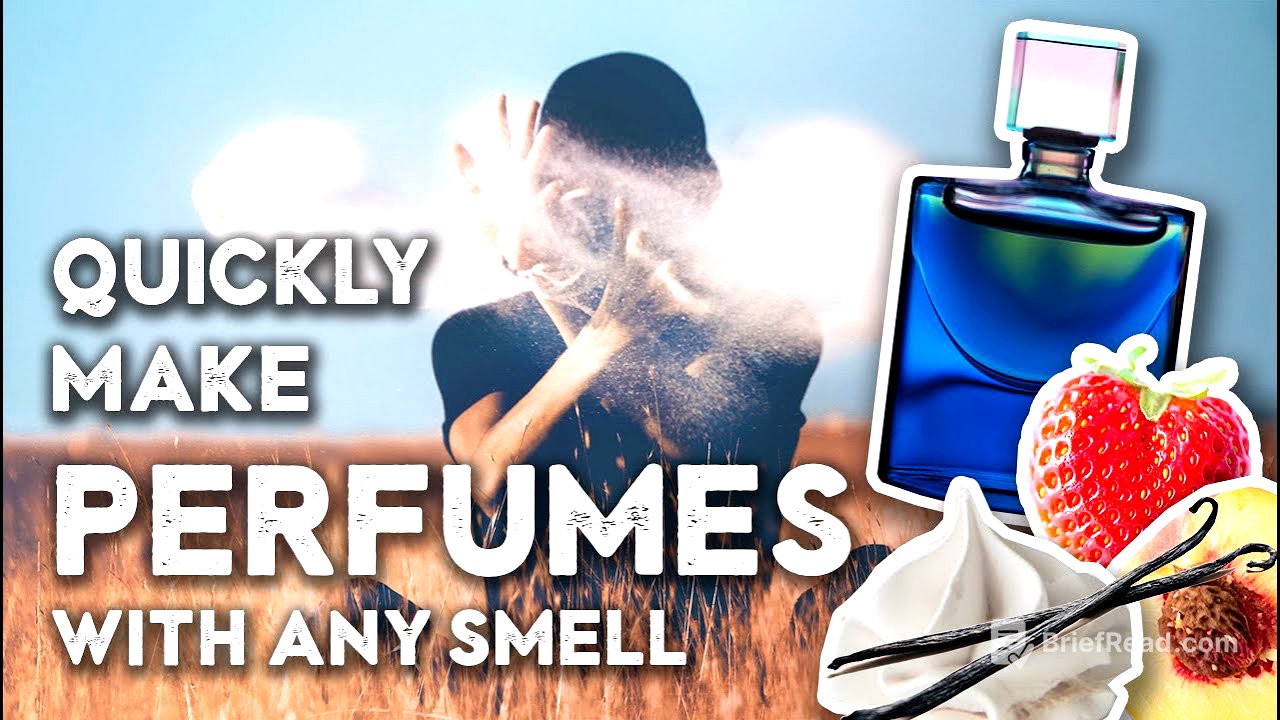TLDR;
This video is all about using perfume bases to create good-smelling perfumes easily. Perfume bases are like generic perfumes that you can build on. They help you experiment with raw materials and get a nice scent without the perfume smelling like absolute.
- Perfume bases are designed to represent a perfume.
- They should be neutral, perform well, and be simple.
- Using perfume bases makes perfumery more fun and creative.
Intro [0:00]
The video starts with a common problem: you mix a bunch of perfume ingredients hoping for a masterpiece, but it smells terrible. The solution is to use perfume bases, which allow you to create many nice-smelling perfumes on your first or second try. This method helps you use raw materials to get the smells you want while ensuring the perfume smells good overall.
What are perfume bases? [1:14]
Perfume bases, also known as "workhorse bases," are designed to represent a perfume. A base in perfumery is a short formula for part of a perfume, like an accord or a raw material. Perfume bases are different because they encapsulate the structure of a perfume, acting like a generic perfume you can build on. Think of it as a black and white drawing that you later color in.
Key characteristics of perfume bases:
- Neutral: They shouldn't smell too strongly of one specific thing.
- Performance: They should last long and be diffusive.
- Simplicity: The simpler, the better.
A great example is Sophia Grossman's accord, made of only four raw materials but used in countless perfumes.
The anatomy of a perfume base [4:26]
To create effective perfume bases, choose raw materials with the desired characteristics. Good categories include:
- Iso E Super: Long-lasting and diffusive.
- Hedione: Pleasant, diffusive, and neutral.
- Ambroxan: Very long-lasting and diffusive (use sparingly).
- Musks: Extremely long-lasting and generally liked.
- Irones and Damascones: Strong and add diffusion.
- Woody Ambers: Like Amber Extreme and Cedramber.
- Salicylates: Good for floral compositions.
- Vanillin and Derivatives: Adds sweetness.
Using combinations of these materials can help you achieve a nice-smelling base that performs well. You might want to create a few different bases for various contexts, like a lighter, fresher one and a darker, woodier one.
Perfume bases in action [7:46]
The presenter shares a perfume base formula he improvised, called "Dusk Bass," made with ambrofix, ethylene brassylate, herbalide, hedione, timber silk, and veritraldehyde. He then adds a small amount of Black Agar Givco 215 base (an oud recreation) to it. The result is a dark, mysterious scent that he loves and would wear as a perfume.
He also experiments with the Grossman accord (iso E super, hedione, alpha isomethyl ionone, and galaxolide) by adding pink pepper. This creates a spicy scent, demonstrating how adding a single raw material can significantly change the perfume.
The presenter also discusses bases inspired by Sarah McCartney, using her "Sexy Scent on the Planet" and "Magical Mystery Material" as examples. He adds mintonat to his rendition of "Sexy Scent on the Planet," creating a unique woody side to the perfume. For "Magical Mystery Material," he adds violif, resulting in a strong, green scent.
Summary [29:22]
Perfume bases offer several benefits:
- Efficiency: You can make a large batch and quickly create perfumes by adding a few raw materials.
- Learning: You become familiar with the base scent and can easily notice the effects of added materials.
- Unique Signature: Creating your own base allows you to develop a unique perfume DNA.
The presenter recommends making perfume bases at a 20% concentration to maintain an eau de parfum concentration in your final product. Overall, using perfume bases makes perfumery easier, more fun, and more creative.









